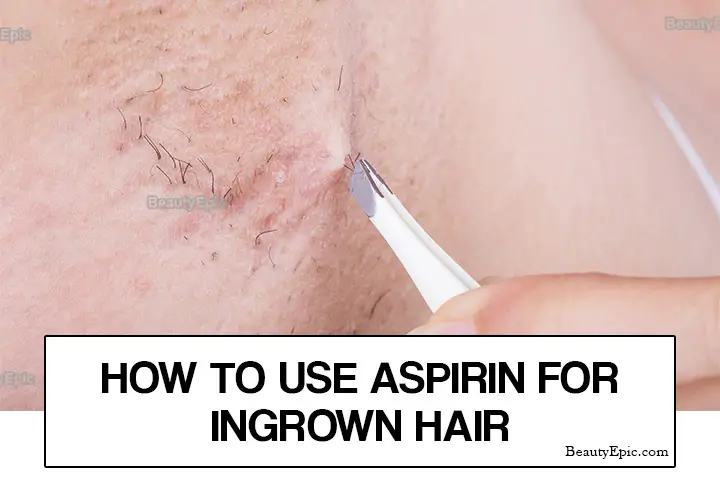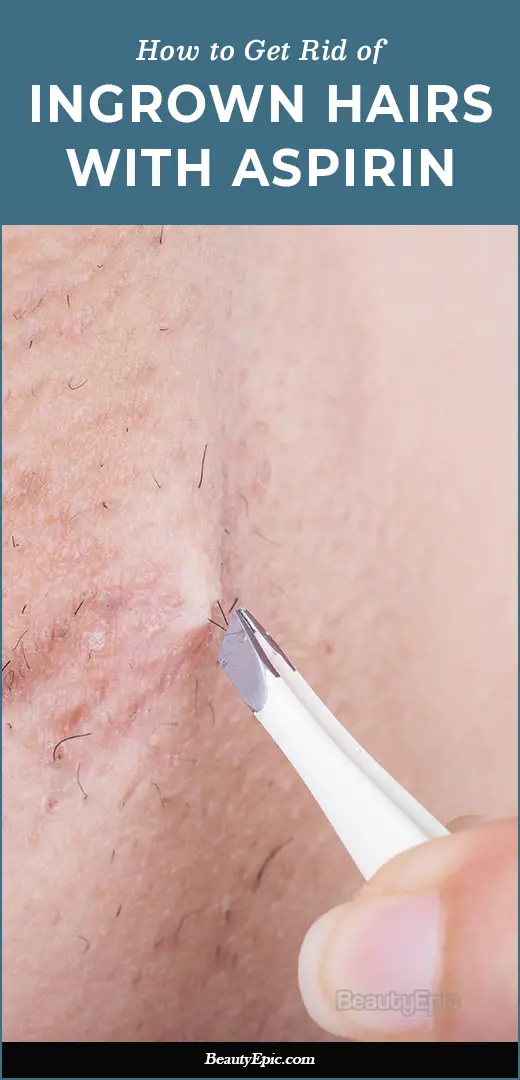
Important: This article is for informational purposes only. Please read our full disclaimer for more details.
Among the problems that can turn to be painful at times is that of ingrown hairs. The condition comes about when hairs bend in backward and move to the skin. Out there, there are many remedies that have been proved to work to solve this problem. There are remedies that come along with many side effects and others less. Among the proved treatment we have are the use of aspirin and a combination of other products. Salicylic acid in aspirin helps greatly to exfoliate the skin and also kills skin pore germs that can lead to the development of this problem.
How to Make an Aspirin Mask for Ingrown Hairs
Ingredients:
To make an aspirin mask to treat this condition,
- you require honey.
- 4 uncoated Aspirin tablets.
- 1/2 teaspoon of water for those with oily skin or 1/2 teaspoon jojoba oil for individuals with normal-dry skin.
How to do:
- Start by placing hot water in a glass bowl.
- Thereafter take half teaspoon of jojoba or water and one teaspoon of honey in a smaller bowl that sits in hot water for it to soften.
- Using a mortar and pestle, followed by crushing your uncoated aspirin tablets.
- Add honey mixture to the crushed aspirin and mix it well.
- Consider adding more water or oil in case the consistency of your mixture is thick.
- Once you have arrived at this, test your mask temperature.
- Using your fingertips and keeping it off the eyes, apply it over your ingrown hairs
- Let it for ten minutes to dry up and thereafter use warm water to remove it then dry part the region you applied.
[ Read: Tea Tree Oil for Ingrown Hair ]
<Honey Aspirin Ingrown Hairs
Honey has natural antiseptic, hydrating and antibacterial properties whereas aspirin contains salicylic acid that makes it the best to treat this condition. Combination of these two will greatly help treat infection and also reduce skin swelling.
Ingredients:
To prepare this treatment,
- 1 teaspoon of water
- 3 uncoated aspirin tablets
- 1 teaspoon of honey.
How to do:
- To make it, crush you aspirin tablets and mix it with honey well to form a paste.
- Apply it over the ingrown hair and let it settle for up to 10 minutes.
- After time elapses, rinse it off using warm water.
How this helps: Combined hydrating, antiseptic and antibacterial properties and the salicylic acid makes it possible to cure this condition.
When to apply: Depending on the severity of your condition and skin type, apply your remedy 1-2 times weekly till you achieve results.
[ Read: Baking Soda for Hair Removal ]
Aspirin and Rubbing Alcohol for Ingrown Hairs
Ingredients:
- 1/3 cup witch hazel
- 325mg 26 aspirin tablets
- a cup of isopropyl rubbing alcohol.
How to do:
- Start by crushing aspirin and then add 18 pieces of your aspirin tablets to alcohol of about 5oz.
- Thereafter close your bottle and shake till it dissolves.
How this helps: Salicylic acid in aspirin helps to fight germs in skin pores and also exfoliates the skin at large. The soothing and anti-inflammatory properties of witch hazel help reduce skin redness while the rubbing alcohol will tighten and tone skin pores to prevent them from clogging up.
When to apply: Apply the remedy once or twice per week until you achieve results.
Ingrown hair is a painful condition that needs to be treated immediately it’s noticed. Use these two techniques to eliminate the condition.

You Might Also Like:
- 12 Amazing Beauty Benefits Of Aspirin
- Aspirin Face Mask: Benefits + Top 5 Face Mask Recipes
- How to Use Aspirin for Acne Treatment?
- How to Use Aspirin for Razor Bumps
- How to Use Aspirin to Treat a Warts?
- 11 Serious Side Effects of Aspirin You Need to Know
- Does Cologne Stain Clothes?
- How to Use Honey for Hair Removal
















